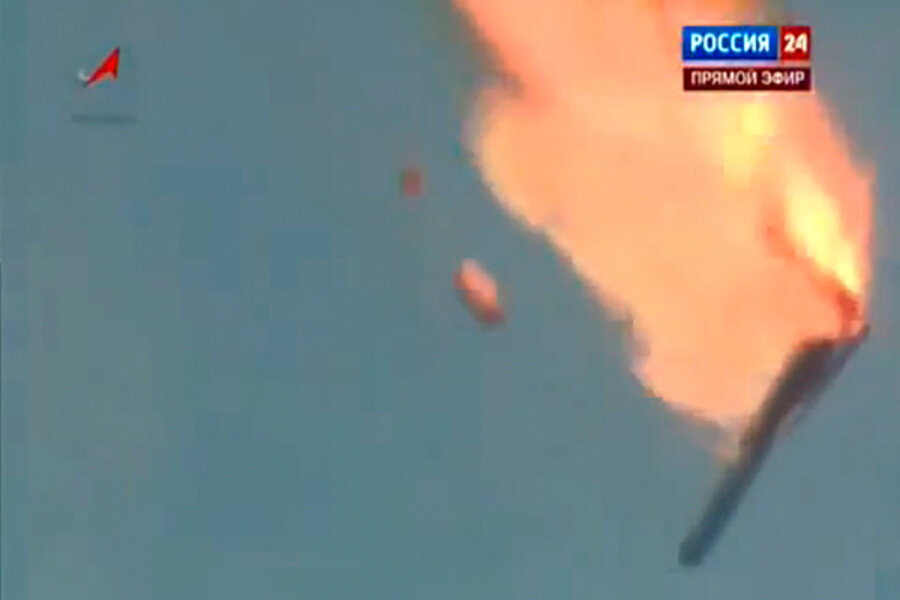Rocket crash strains Russia's troubled space program
Loading...
| Moscow
A Russian Proton-M rocket booster carrying three navigation satellites for the Glonass network – Russia's answer to the US global positioning system – exploded within seconds of takeoff Tuesday, raining toxic debris down over a wide area around Kazakhstan's Baikonur cosmodrome.
For Russia's space program, the $200 million mishap is a dismal signal that engineers may not yet have solved the underlying problems that have produced a string of costly accidents in the past three years so jarring that, at one point, the head of Russia's space agency suggested that it could only be explained by "foreign sabotage."
Reports from Baikonur say that all looked well with the launch until about 10 seconds after takeoff, when the rocket wobbled, then began to fly horizontally before disintegrating in a spectacular fireball and crashing back into the spaceport. The event was broadcast live on Russian state TV, as major Russian space launches usually are.
No casualties were reported.
"There was an accident during the Proton-M launch. The rocket fell and exploded on the territory of the launch site," the official RIA-Novosti agency quoted a spokesman for Russia’s space agency Roskosmos as saying.
According to Russian news reports there were 600 tons of highly toxic fuel aboard the rocket. Kazakhstan's Ministry of Emergency Services said it had contingency plans to evacuate the nearest community – about 40 miles away – if the cloud of poisonous smoke still rising from the wreckage several hours after the crash continued to drift that way with the winds.
Glonass, originally developed for the Soviet military, is currently the only fully operational competitor of the US global positioning system, having achieved full global coverage about two years ago, despite several serious setbacks. In the future it will also compete with the European Space Agency's as-yet unfinished Galileo satellite navigation network.
Tuesday's crash looked similar to several previous ones that have occurred in the past three years, many of them involving the workhorse of Russia's space program, the Proton-M, which is evolved from a highly successful family of Soviet rocket boosters.
Russian space scientists say the series of accidents that has beset Russia's space program is probably not due to any flaws in the basic technology, which is mostly tried-and-true designs from the Soviet era. Rather, the problems probably stem from quality control and human-factor issues that have emerged in recent years as Russia scrambles to become a major spacefaring player without the benefit of the USSR's vast industrial base and huge corps of trained space professionals.
Russian Prime Minister Dmitry Medvedev on Tuesday appointed a special government commission to investigate the causes of the crash and identify any officials who may have been responsible. He also directed his government to prepare tougher oversight measures over the space industry to prevent such accidents in future, RIA-Novosti reported.









